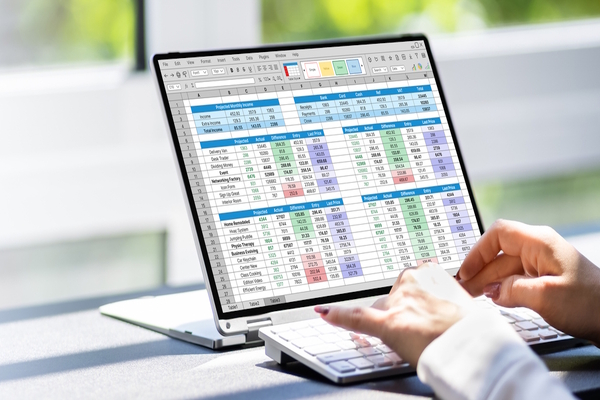Surviving Black Friday

Rob Shaw at Fluent Commerce describes how to prevent downtime and increase sales
As Black Friday approaches, retailers will once again face the annual challenge of generating maximum profit from this high sales potential shopping event. For many, however, issues created by an outdated order management system (OMS) means that they’ll struggle to cope with the onslaught.
Avoiding system downtime and ensuring accurate stock availability is mission critical for satisfying the intense demand created by Black Friday shoppers. Should any part of the OMS go offline, the consequences will be significant. Retailers will need to be confident their OMS is scalable and resilient enough to handle the influx of orders.
The consequences of OMS downtime
During Black Friday the window to capture sales is brief and every second counts. Just a few minutes of OMS downtime can result in thousands of orders being lost and crucial revenue.
Service consistency is the name of the game here and retailers need to be certain that their OMS will cope with hundreds of orders per second with ease. That’s because any issues that arise during this peak event will result in delayed orders, inaccurate stock levels, and a poor customer experience that could result in long term and lasting damage to the brand. So much so that it could take months, and even years, to regain consumer trust and repair market reputation.
Events like Black Friday represent a pivotal moment for retailers. So delivering a smooth and reliable experience will be mission-critical for preventing customer frustrations and preventing outcomes such as negative online reviews, abandoned carts, and lost loyalty.
Why traditional OMS solutions struggle
As the orders start flooding in, not all OMS systems are architected to keep up. That’s especially the case for traditional systems that are unable to dynamically provision the resources that are needed.
As order volumes spike, these systems will slow down or crash entirely. Contrast this with modern cloud-powered solutions that can instantaneously scale and spin up resources to handle extreme volumes with ease. All of which will prevent the slowdowns and crashes that frustrate customers and derail sales.
Another key challenge for legacy OMS systems during peak demand periods is inventory availability response times. That’s because the massive surge of visitors to an online site will result in increased browsing activities as shoppers check if an item they want to buy is in stock and when, and how, they can get it. All this additional activity bogs down traditional OMS systems and generates bottlenecks that slows system performance and can even lead to crashes.
When inventory services go down customers aren’t able to see what’s actually in stock and as a result sales and revenue generation opportunities will be lost. Worse still, customers could end up purchasing items that are no longer available in inventory. A scenario that is costly for retailers to manage and will cause significant disaffection for customers. To address this, retailers will need an OMS solution that is capable of dynamically scaling to deliver accurate real-time, not cached, inventory data via an API.
Finally, traditional systems often struggle to integrate with modern ecommerce platforms and third-party services. This in turn impacts the smooth flow of data and orders that is essential for assuring customer satisfaction during high-pressure demand periods. It also makes it challenging to automate workflows and ensure that order processes all work seamlessly together.
How to prepare for Black Friday
There are three proactive steps retailers can take to get prepared and ensure their OMS is able to cope with the demands created by Black Friday:
1 Undertake a system stress-test
Before the big day, retailers should conduct a thorough stress test of their OMS to identify any weak points that could lead to downtime. By using load-testing tools to simulate Black Friday conditions, retailers will be able to assess the ability of their system set up to handle the transactional pressures.
2 Optimise inventory and fulfilment processes
To save time now and prevent issues on Black Friday, retailers should look to review and optimise their inventory levels, fulfilment strategies and supplier relations. The aim of the game here is to streamline processes so that demand on the day can be met quickly and efficiently.
3 Plan for contingencies
By developing a contingency plan to handle unexpected issues, retailers will be able to minimise the impact of any unforeseen challenges. This plan should include a review of backup systems, alongside proactive system monitoring and support protocols. Finally, establishing a clear communications protocol will ensure that everyone is clear on who to contact when specific issues arise.
Get ready for success
There is no denying that getting ready for Black Friday can be stressful, but with the right preparations retailers can maximise performance on the day and keep downtime at bay.
By taking steps to prevent costly OMS downtime, undertaking load testing to simulate Black Friday conditions, and optimising the entire order management click-to-delivery journey, retailers can ensure they are able to provide a smooth and engaging experience that will boost shopper conversion rates and sales in the most cost-effective and profitable way possible.
Rob Shaw is MD EMEA at Fluent Commerce
Main image courtesy of iStockPhoto.com and ArtistGNDphotography

Business Reporter Team
Most Viewed
Winston House, 3rd Floor, Units 306-309, 2-4 Dollis Park, London, N3 1HF
23-29 Hendon Lane, London, N3 1RT
020 8349 4363
© 2025, Lyonsdown Limited. Business Reporter® is a registered trademark of Lyonsdown Ltd. VAT registration number: 830519543





